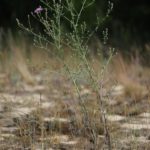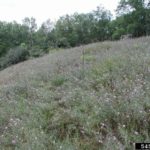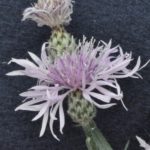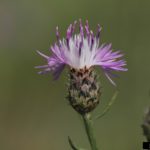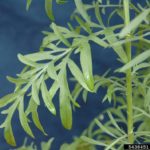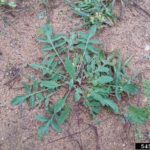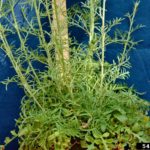Gallery:
- Spotted knapweed
- Spotted knapweed infestation
- Spotted knapweed flower
- Spotted knapweed flower
- Spotted knapweed leaves
- Spotted knapweed rosette
- Spotted knapweed rosette and stems
Common names:
Spotted Knapweed
Scientific Name:
Centaurea stoebe (syns: C. maculosa, C. stoebe ssp. micranthos)
Description:
Spotted knapweed is a biennial or perennial in the Asteraceae (sunflower) family. It spreads aggressively, has spread across most of the continental United States and Canada, and is considered one of the most dominant weeds in the western United States. The plant has multiple stems with alternate leaves that are blue-gray and unlobed in the upper portion of the plant and lobed on lower areas. Flowers are pink to purple (sometimes cream-colored), with bracts that are black-tipped, giving it a spotted appearance. Seeds disperse easily through wind, water, livestock, wildlife, and human activity.
Life cycle:
Biennial or short-lived perennial
Height of mature plants
3 to 5 feet
Flower color:
pink to lavender (occasionally cream)
Bloom time:
June to November
Look-a-likes:
There are many other knapweed species that can be difficult to distinguish from each other. The black triangular spots on the bract tips below the flower head are an important feature for identifying spotted knapweed. If you need help with plant identification, please contact your county noxious weed coordinator.
Habitat:
Spotted knapweed often grows in dry areas including meadows, pastures, rocky areas, gravel sites, railroads, roadsides, vacant lots, and forest clearings. It can also invade sandy or gravelly floodplains.
Impacts:
Spotted knapweed can quickly colonize disturbed land and roadsides. It is a prolific seed-producer, with 1000 seeds per plant that can live 8 years in the soil. Infestations of spotted knapweed decrease plant diversity and create wildfire hazards. Spotted knapweed has become a major agricultural issue and the costs to control this plant can create problems for land owners. Oregon infestations are broadly scattered though increasing, causing economic losses to right of way maintenance, grazing and range productivity.
Noxious Weed Listing:
- WeedWise: Maintenance
- State of Oregon: Class B, T
- State of Washington: Class B
- Four County CWMA: Class B
- Columbia Gorge CWMA: Class B
Origin:
Europe
Links:
Oregon Noxious Weed Profile
Washington Noxious Weed Profile
Invasive.org profile
CABI Invasive Species Compendium
Global Invasive Species Database

